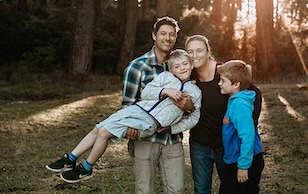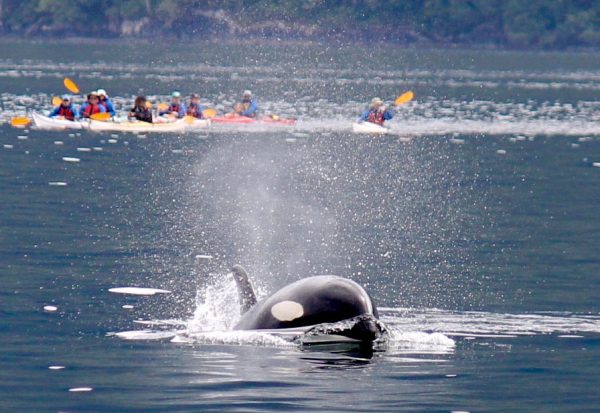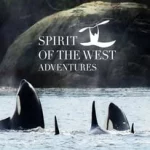April 20th, 2024
British Columbia, Canada is an incredible destination for viewing wildlife—so much so that travellers specifically come to Coastal BC to experience these astonishing sightings first hand. This area is world renowned for viewing all kinds of wildlife, including whales.
To help you get the most out of your trip to Coastal BC, here’s a guide to the most frequently asked questions about whales, including when the best times are for sightings, where you can see whales and wildlife, and how you can do it in a safe and respectful manner.
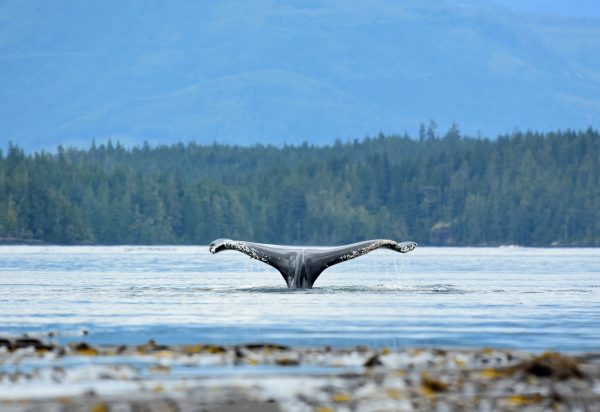
WHERE IS THE BEST PLACE TO VIEW WHALES in coastal bc?
Hands down, the best place in Coastal BC to view whales and all kinds of wildlife is the Northern Vancouver Island area, specifically Blackfish Sound, Johnstone Strait and the Broughton Archipelago. Here’s why:
- The area is the summer home of over 280 Northern Resident orcas— also known as ‘killer whales’. This is almost four times the population of orcas off the southern parts of Vancouver Island.
- Transient or Biggs orcas also come to this region to forage for food and to socialize.
- Humpback whales love this area, too! The ocean off Northern Vancouver Island sees great upwellings of cold water, which means there are lots of nutrients—and therefore lots of food for these amazing creatures.
- There are fewer Northern Vancouver Island whale watching companies than elsewhere in BC, which means less traffic on the water and around the whales. Options for whale watching trips include closed motor and sailing vessels, zodiac-style open vessels and, of course, our favourite: kayaking with the whales. Moving silently through the ocean at water level is the most incredible experience—as is hearing whales from your tent at night!
- Northern Vancouver Island is true Canadian wilderness, rugged, remote and stunning. The whales seem to love this area for the food it provides, the opportunities for socialization and breeding with other whales, and for the unique gravel beaches that they like to rub their bellies on. (This behaviour is not something we can see from above water, but does draw the whales to the area and is a fascinating socially learned behaviour that only happens in this region.)
- Whales aren’t the only wildlife that thrives in Northern Vancouver Island. Bald eagles, Pacific white-sided dolphins, Dall’s porpoises, harbour porpoises, black bears, wolves, cougars and incredibly diverse intertidal life all thrive here due to the richness of these waters and the surrounding forests.
NOTE: If you are looking for a one-day-only tour by motorized boat to view whales, you can do that from Port McNeill or Port Hardy in the Northern Vancouver Island region, or in the Victoria area in the southern Vancouver Island region. But living in the realm of the whales and all this other wildlife is an experience like no other—leagues away from spotting wildlife on a quick, high-speed zodiac trip.
WHAT ARE THE BEST TIMES TO VIEW WHALES in coastal BC?
The most important part of viewing whales in Coastal BC is deciding the best time to go:
Orcas: June through the end of September. Peak orca numbers and sightings tend to be from mid-July until mid-September.
Humpbacks: These sightings are steady from June through October (humpbacks feed more in early summer, and are more social in the later summer).
Bald Eagles: The sightings are frequent in the early summer months. After that, they move to the river mouths to feast as the salmon start to spawn in late August.
Lucky for you, the best whale viewing times also coincide with the best weather for enjoying the great outdoors! Meanwhile, all other marine and land wildlife—bears, dolphins, otters, seals, sea lions—are not as seasonal as whales and can be spotted anytime throughout the year.
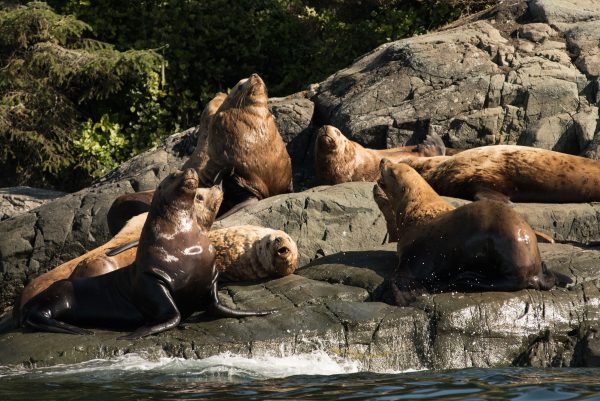
WHAT SHOULD I KEEP IN MIND WHEN VISITING COASTAL BC?
- Make the most of the region
There is so much to see and do on Vancouver Island that we recommend spending at least a week in the area if you can. Travelling to Northern Vancouver Island from the major hubs of Vancouver, Victoria and Seattle can be quick and simple if you need it to be, but there so many incredible spots along the way that it’s worth taking your time. We’ve put together a comprehensive list of things to do and places to stay on Vancouver Island as an example of the diverse offerings found in the region.
Even if you are planning a quick trip, make sure you leave enough time to travel from point to point. BC is a very big place, and you might be surprised how long it can take to get from the Vancouver airport to your destination, especially with ferries involved. Vancouver Island alone is comparable in size to the Netherlands. Never fear, though: with some planning and pro tips you will be here before you know it. Check out the Hello BC website to help you make an efficient travel plan.
If you can manage it, it’s also a great idea to plan a couple of flex days into your trip —whales operate on their own schedule, and there is no guarantee of a sighting on any given day. Having the ability to stay on an extra day or two if needed can help you go home with the incredible whale-spotting memories you’ve been dreaming of.
- The right clothes and gear make for a happy traveller
June through September is considered summer in coastal BC and the temperatures during this time are quite comfortable, ranging from 70 to 85°F (18 to 30°C), depending on the area. Northern Vancouver Island weather tends to be warmest, driest and most stable from July through early September, with daytime temperatures of 60 to 80°F (15 to 25°C) and nighttime lows hitting about 53°F (11°C). June and late September will have cooler temperatures. But since weather can be unpredictable, we recommend coming prepared for any type of weather—rain and shine—in any season.
We always say there is no such thing as bad weather, just bad gear. Having a sense of the weather conditions and having the right gear to stay warm, dry and safe in the sun makes for a much more enjoyable adventure.
But never fear if you don’t have all the right gear! Most good tour operators will have gear to borrow or rent for a nominal fee. Contact us for information. We would be happy to set you up!
- Remember to respect the Wildlife
Really and truly, nothing is as awe-inspiring as viewing wildlife in its natural habitat. Here are some easy ways to ensure your time with wildlife doesn’t have a negative impact on these special creatures, and that future generations can have this same phenomenal experience.
- Follow the Be Whale Wise Guidelines, which help ensure positive and safe whale viewing.
- Choose a company that supports and upholds these principals. Companies that are members of the North Island Marine Mammal Stewardship Association follow strict guidelines for responsible wildlife viewing and give back a portion of their sales to research and conservation efforts that benefit the area’s whales and wildlife.
Ensure that your viewing pleasure doesn’t interfere with land or marine animals or their natural behaviours and habitat. Some of the basics for responsibly viewing whales from your kayak include:
- Never approach orcas closer than 200 meters (about 650 feet) and other whales closer than 100 meters (325 feet). This recently became law. You can check out the details here.
- Position yourselves out of the path of the whales.
- Ensure that you are either tight to shore or well off from shore if the whales are feeding when you see them.
- Your choice of a responsible travel company will mean they will help you to minimize your impact on the whales all while complying with regulations and witnessing all their splendour.
HELPFUL RESOURCES & LINKS
HelloBC
Provides maps and tools for calculating driving distances between cities and for tips on great places to visit along the way.
Marine Education and Research Society (MERS)
Provides great charts on where to see whales, directly from whale researchers!
North Island Marine Mammal Stewardship Association (NIMMSA)
A collection of companies committed to ethical whale watching and advertising. Spirit of the West Adventures is a founding member and on the board of directors.

